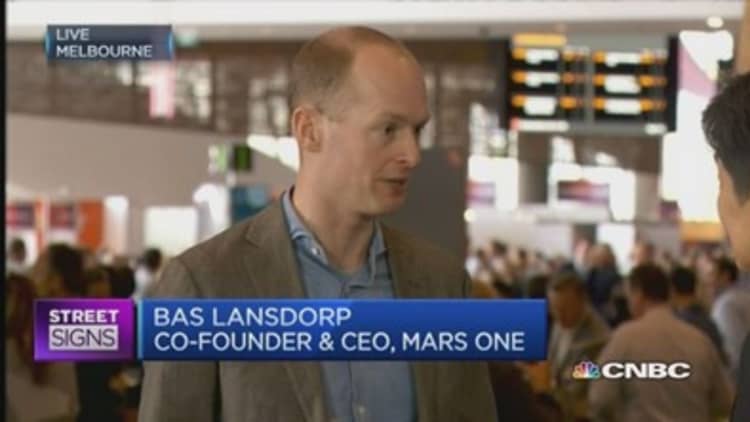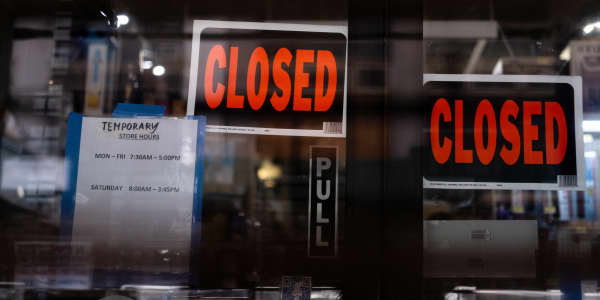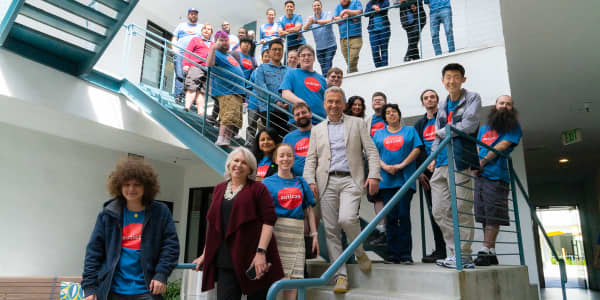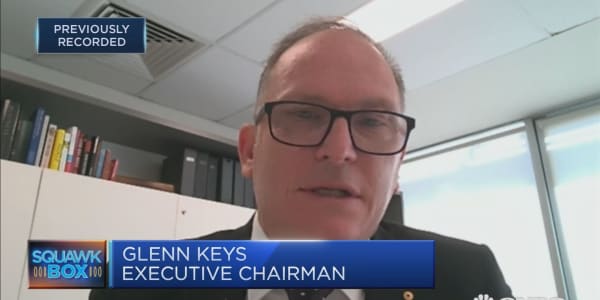Some people want to change the world, while others would rather just leave it behind. Take Bas Lansdorp, the Dutch entrepreneur who is the co-founder of Mars One, a nonprofit that aims to establish a human settlement on the red planet by 2027. A mechanical engineer by training, Lansdorp sold most of his stake in Ampyx Power, an airborne wind-energy company he founded in 2011, to get the start-up capital to jump-start this space initiative.
"This involves all of mankind around the first manned flight and settlement of Mars," said Lansdorp. "It's all about exploring a new world and conduct revolutionary research."
Sound outlandish, like a sci-fi scene from the movie The Red Planet? Perhaps, but so far he has put together an impressive board of advisors, including Mason Peck, NASA's former chief technologist; and Ester Dyson, a leading angel technology investor. He has also contracted with Paragon Space Development for the suits and life-support systems, and Lockheed Martin and Surrey Satellite Technology to work on the lander and orbiter, respectively.
After raising $317,000 on crowdfunding site Indiegogo, he is now raising a second round of venture capital from large European asset managers and business angels that he expects to close in two months, but he will not disclose the size or terms of the financing.
Read MoreWorld is not enough: Millionaires bet on space travel
"The idea is to send a crew of four every two years beginning in 2027, steadily increasing the colony's size. The journey will be hard and take seven to eight months. Eventually, a living unit will be built from local materials. We plan to train crew members for eight years prior to their missions. Once the crew arrives, they would be there to stay and be self-sufficient."
Man's new frontier
But such a grand scheme comes with a hefty price tag. Lansdorp has estimated it would cost $6 billion for all missions, sending humans, the hardware for the colony and final landing. The idea is for it to be funded by sponsors and media that will pay for broadcasting rights of shows and movies, documenting everything from the astronauts' training on Earth to their deployment and colonization of Mars. Training will take place in a project site where they will learn engineering, how to repair habitat structures, grow food and address medical issues, as well as train for the long spaceflight.
But experts, like Jim McGregor, founder and principal analyst of Tirias Research, doubt that cost is realistic. "Considering the magnitude of this project I'd quadruple that estimate," he said. He has good insight. The former General Dynamics engineer helped build the Atlas rocket.
An MIT research paper published last year cast doubt on the feasibility of Mars One. It concluded that the atmospheric controls technology has not yet been developed to deal with growing crops inside the habitat and the high levels of carbon dioxide and oxygen that could build up inside the structure.
Mars One has captured the imagination of numerous people from around the world fascinated with the prospect of pioneering a new chapter in space exploration. (See interior habitat image above.) It reported that 200,000 people submitted applications to be candidates for the first Mars crews. Mars One has shortlisted 100—50 males and 50 females to advance to the selection stage.
But the project has been shrouded in controversy. Last week a former NASA researcher, Joseph Roche, now of Trinity College and who became one of the 100 financials to live on the Mars settlement, expressed concerns over how contenders earned their spot, claiming they paid for it. Lansdorp has responded in a video that these claims are untrue and his project is not a scam.
Read MoreAmerica's secret weapon in the US-Russia space war
NASA experts point out the many challenges such an undertaking will face, questioning if this project can ever get off the ground in the estimated time frame. This kind of scenario would have humans—for the first time—extend spaceflight to months or years. How travelers will fare under these conditions is anyone's guess.
Another unknown is how a small number of humans will be able to exist on the harsh desolate Red planet—a fragile oasis of water and oxygen on an inhospitable Martian soil, where temperatures average around minus 67 degrees Fahrenheit. Those astronauts will be subject to whims of solar and dust storms, meteorite strikes and physical injury. Given the limited medical resources, this is a very dangerous endeavor.
While the notion of sending humans to Mars isn't far-fetched, I don't think it is realistic to think it can happen in 10 or 12 years.Jim McGregorfounder and principal analyst, Tirias Research
"While the notion of sending humans to Mars isn't far-fetched, I don't think it is realistic to think it can happen in 10 or 12 years. This is probably something more likely to happen by 2050," said McGregor. As he explained, while the soil and raw materials on Mars is similar to that of Earth's, the technology for humans to survive there for the long term is not yet available.
Read MoreThe final frontier: Universal space travel
In the meantime, NASA is busy developing its own plans to send humans to Mars. The first step is to use robotic explorers to answer some fundamental questions about the planet's atmosphere so it can develop radiation shielding and the right landing gear for large payloads. Its activities include experiments such as MOXIE (Mars Oxygen In-Situ Resource Utilization Experiment) on the Mars 2020 Rover to see if oxygen can be created from the Martian atmosphere.
Despite criticism, Lansdorp remains undaunted. He became determined to establish the first permanent human colony on Mars during his studies at the University of Twente. Like any expedition to a foreign uncharted territory, he admits it is fraught with risk. But for a select few, it is a trip of a lifetime.
—CNBC's Lori Ioannou

MARS FACTS …
1. The planet was first recorded in the 2nd millennium BC by Egyptian astronomers.
2. Mars takes its name from the Roman god of war. It has two moons: Phobos and Deimos.
3. Mars and Earth have approximately the same landmass.
4. Mars is home to the tallest mountain in the solar system.
5. Its surface temperature averages around –67°F.
6. Only 18 missions to Mars have been successful. Mars has the largest dust storms in the solar system, and its seasons are extreme because of its elliptical orbital path around the sun.
Source: space-facts.com/mars/




